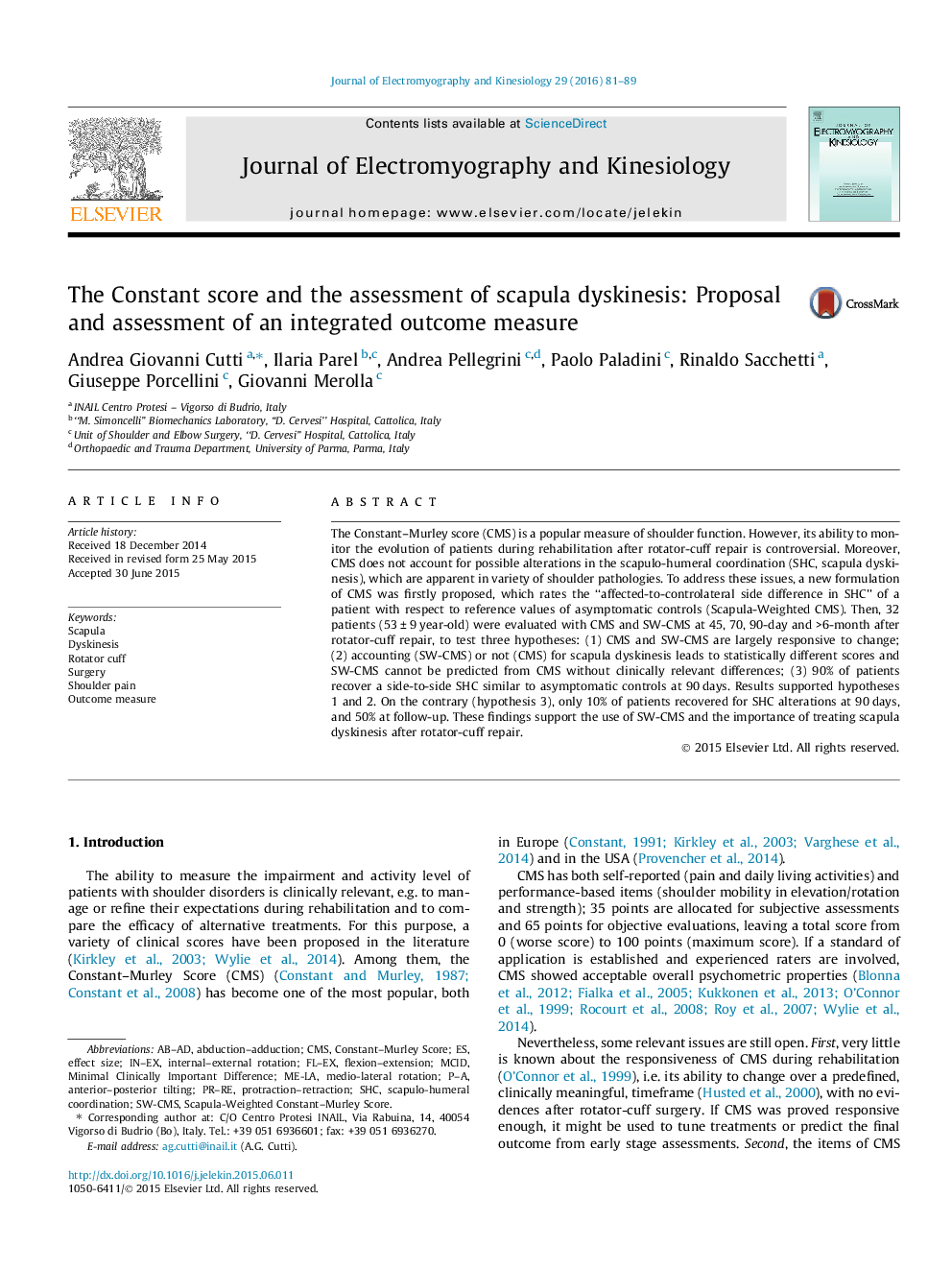| Article ID | Journal | Published Year | Pages | File Type |
|---|---|---|---|---|
| 6210262 | Journal of Electromyography and Kinesiology | 2016 | 9 Pages |
The Constant-Murley score (CMS) is a popular measure of shoulder function. However, its ability to monitor the evolution of patients during rehabilitation after rotator-cuff repair is controversial. Moreover, CMS does not account for possible alterations in the scapulo-humeral coordination (SHC, scapula dyskinesis), which are apparent in variety of shoulder pathologies. To address these issues, a new formulation of CMS was firstly proposed, which rates the “affected-to-controlateral side difference in SHC” of a patient with respect to reference values of asymptomatic controls (Scapula-Weighted CMS). Then, 32 patients (53 ± 9 year-old) were evaluated with CMS and SW-CMS at 45, 70, 90-day and >6-month after rotator-cuff repair, to test three hypotheses: (1) CMS and SW-CMS are largely responsive to change; (2) accounting (SW-CMS) or not (CMS) for scapula dyskinesis leads to statistically different scores and SW-CMS cannot be predicted from CMS without clinically relevant differences; (3) 90% of patients recover a side-to-side SHC similar to asymptomatic controls at 90 days. Results supported hypotheses 1 and 2. On the contrary (hypothesis 3), only 10% of patients recovered for SHC alterations at 90 days, and 50% at follow-up. These findings support the use of SW-CMS and the importance of treating scapula dyskinesis after rotator-cuff repair.
